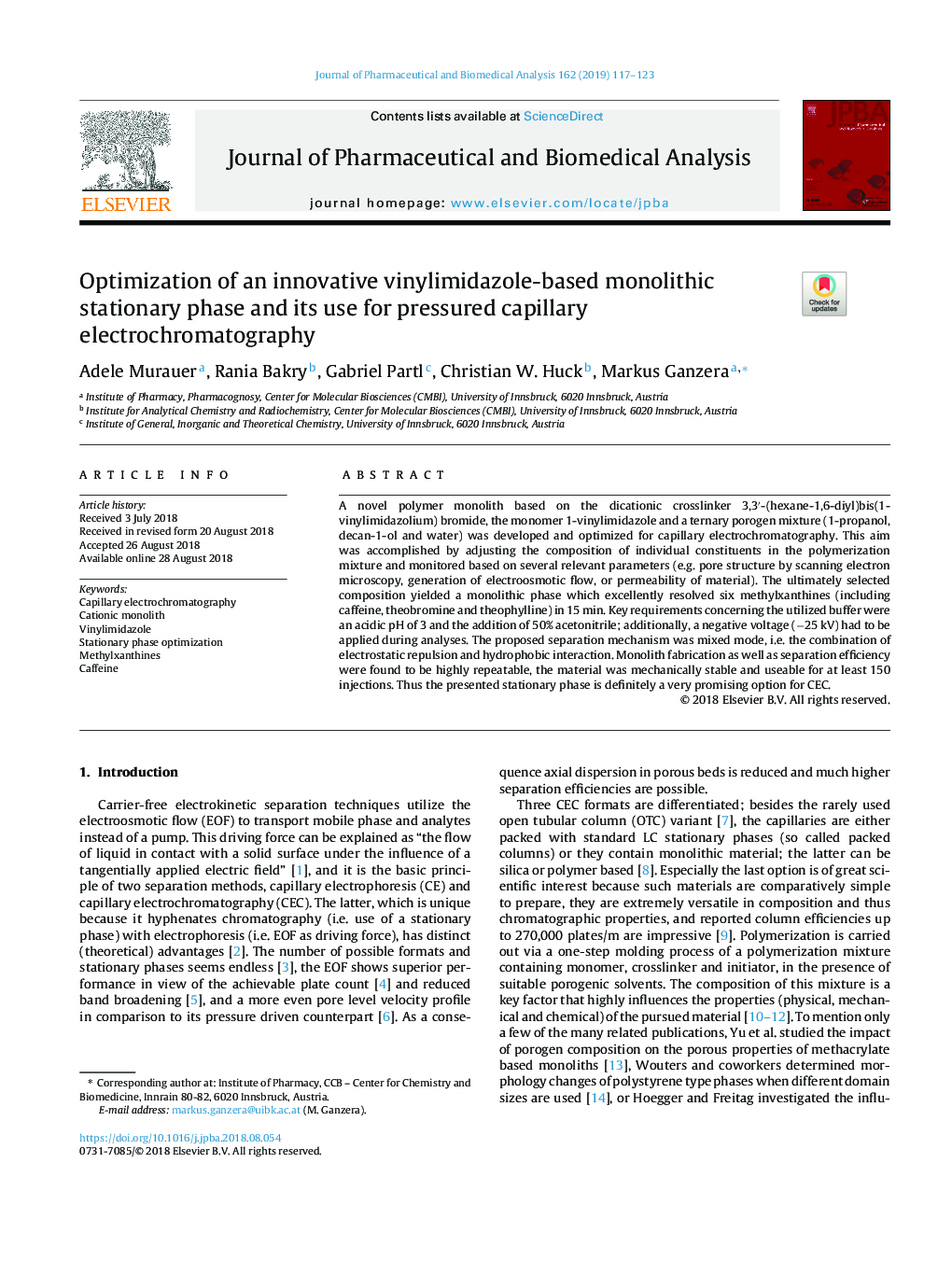| Article ID | Journal | Published Year | Pages | File Type |
|---|---|---|---|---|
| 10154491 | Journal of Pharmaceutical and Biomedical Analysis | 2019 | 7 Pages |
Abstract
A novel polymer monolith based on the dicationic crosslinker 3,3â²-(hexane-1,6-diyl)bis(1-vinylimidazolium) bromide, the monomer 1-vinylimidazole and a ternary porogen mixture (1-propanol, decan-1-ol and water) was developed and optimized for capillary electrochromatography. This aim was accomplished by adjusting the composition of individual constituents in the polymerization mixture and monitored based on several relevant parameters (e.g. pore structure by scanning electron microscopy, generation of electroosmotic flow, or permeability of material). The ultimately selected composition yielded a monolithic phase which excellently resolved six methylxanthines (including caffeine, theobromine and theophylline) in 15âmin. Key requirements concerning the utilized buffer were an acidic pH of 3 and the addition of 50% acetonitrile; additionally, a negative voltage (â25âkV) had to be applied during analyses. The proposed separation mechanism was mixed mode, i.e. the combination of electrostatic repulsion and hydrophobic interaction. Monolith fabrication as well as separation efficiency were found to be highly repeatable, the material was mechanically stable and useable for at least 150 injections. Thus the presented stationary phase is definitely a very promising option for CEC.
Related Topics
Physical Sciences and Engineering
Chemistry
Analytical Chemistry
Authors
Adele Murauer, Rania Bakry, Gabriel Partl, Christian W. Huck, Markus Ganzera,
